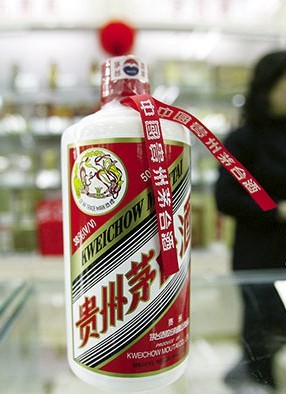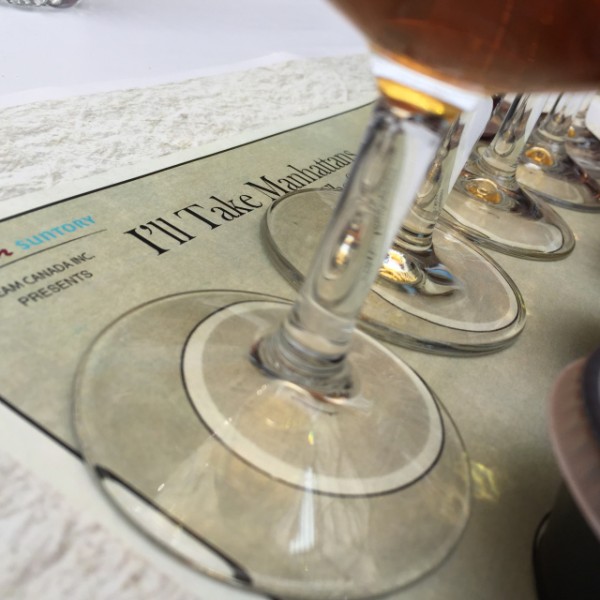Imperfect Perfect Manhattan, 10 questions with Dale Degroff
Contributed by on May 06, 2015
Zero readers love this post.
justcocktails.org - dedicated to better imbibing
Dale Degroff undoubtedly pioneered a return to craft ingredients and classic cocktails from New York’s, Rainbow Room.
Degroff continues to guide new generations of bartenders to pick up where he started – the day he did something crazy and put fresh juice in a drink.
We caught up with the legend at EAT! Vancouver this week, here are the first 10 questions;
1) The big story this past week is that the Manhattan Cocktail Classic was cancelled for 2015. What do you think happened?
“I suggested to the new management group some time ago that they slow down and plan a larger, more properly prepared festival in 2016. But they’re an events company and they said they wanted to move forward and that they ‘do this all the time’. They’re an events company that is not overly familiar with the “cocktailian” community, to borrow Gary Regan’s expression, so they may not have understood the ins and outs of the sponsoring requirements and I don’t think they had time to learn about that community but I’m hoping that between now and 2016 they will pull it all together.”
2) So you think MCC will be back next year?
“I don’t know, but I hope so. Some of the people who planned events are going forward with them this year, just not under the umbrella of MCC – they are going to create another name. The people involved are going to use the venues where they work”
That’s great to hear that the bartenders in New York are banding together to continue to represent their community.
3) What do you think about the state of today’s competitions? Do you think that there are too many?
“I think that the major ones, like Diageo World Class, which is a worldwide competition, are so well institutionalized. I’ve been involved with Worldclass from the beginning and it’s the most far-reaching, the most well-run and most interesting of the competitions, I think.
Bols has also been doing one for years that I think is deeply challenging and really interesting.
As far as the smaller competitions go, with each brand, it’s definitely a way to raise awareness around your brand. There’s nothing wrong with them, they’re fun, they give people a chance to compete against one another – I have no problems with them. I have judged at some of them and they bring people together and that’s always a good thing.
Diageo Worldclass has now aligned itself with the United State Bartenders Guild (USBG) and will be doing a lot of the real managing of the competition around the United States, which is a good thing because in some States for liquor companies to do this sort of thing is considered unfair. By bringing in the USBG they help the moving forward of the competition and will keep the event more fun and, again, a great way to get people together.”
4) We recently talked to David Wondrich and Gaz Regan. Wondrich re-released Imbibe, and Regan is working on a re-release of the Joy of Mixology. Do you have something in the works along those lines? A revision that is in sync with the new information that wasn’t available ten years ago?
“Not really. Craft of the Cocktail (2002) still stands and is still relevant. We’ve gone a long way but for the neophyte or for the home bartender Craft still stands as an excellent first book. What I am working on is a look back at forty years of food and beverage. There will be some cocktails involved but it won’t really be a recipe book. There will be a few, but it will be looking more at the revolution in food and drink that has really galvanized the industry and changed they way Americans eat and drink.”
That’s great. I grew up in the prairies of Canada and the first drink I ever wanted to make was a Manhattan and there was no one who could tell me how to make one properly. No one around me knew what bitters were. Your book was the first one I ever picked up. I remember even simple instructions, like how to make a simple syrup, really blew my mind because there was no one I could ask for advice and google wasn’t the search engine it is now. It’s amazing, as a comment, how far-reaching a book can be, into communities you may not even consider when you’re writing.
“Yes, that’s something I’m proud of that the book showed, even if they were intuitive to me. Other books were a list of ingredients. They didn’t show you anything. They didn’t show you garnish. They didn’t show you glassware, tools and techniques. I wanted to change that.”
5) What do you think is the next big thing in cocktail books? What direction do you think they’re going in?
“It’s such a new horizon. We’ve become so much more culinary with the cocktails now. Bartenders are really going to have to hone their skills in that direction and I think you’ll find more and more bartenders getting involved in culinary classes and running kitchen technique classes. There are more bartenders going toward non-traditional spirits that are available in other parts of the world that haven’t been traditionally available.
As hotel chains stretch out around the world into these markets they will need beverage managers that understand these things, not just the western spirits and the western cocktails. Tea, coffee and interesting spirits from around the world – bartenders will have to know their flavor profiles, how they’re made, do they have application to a menu, or not. Bartenders will have to know how to teach people how to drink them. Luxury hotels are going to have beverage managers that can bring the signature of their company into these new markets while embracing new products.”
6) That was something that came up with David Wondrich. He is writing the Oxford guide to spirits and notes all the eastern spirits that need to be cataloged and understood.
“Yes, that’s exactly where David is going. He’s got to make it more of a world guide. A world encyclopaedia, as it were. Festivals are bringing bartenders to all markets. We see Russia where there’s now a huge interest in American Whiskey. Genever is big in new markets and bartenders are trying out Genever drinks from the 19th Century. New Spanish liqueurs are arriving in North America. There’s lots of future in this for bartenders who are looking down the road a little further.
For instance, in our Bartender Bootcamp, we’ve exposed Bartenders to the idea of embracing new products and new disciplines when appropriate. A beverage manager is becoming competitive with a traditional food manager that can be quite valuable to their company and able to command a six figure salary. From the ambition point of view, or from creating a niche – these are positions and opportunities that didn’t even exist before. There’s too much money at stake not to get it right.”
6.1) How do you drink your Baiju?
 Kweichow Moutai. Image Credit Stephen Shaver
Kweichow Moutai. Image Credit Stephen Shaver
“I’ve only drank it straight, so far, haha. Well, unless you count the fact that I prefer to take it with food. It’s incredibly food friendly. The one David Wondrich and I really enjoyed while we were in China was Kweichow Moutai, which is unfortunately also the most expensive one. It’s unique, and complex.”
7) What do you value as your most important tool behind the bar?
“Gotta say it’s the classic set of Hawthorne, Julep and Boston Shaker – the tools you use daily.”
8) Is there a bar tool that you never use?
“I didn’t use jiggers that much because I was trained as a free-pour, hand eye coördination bartender. Not because I thought jiggers were bad but because in the era that I learned in, they simply weren’t something that we were taught to use. It was considered cheap to pour a drink of whiskey to a guest from a jigger. A standard free pour was 2 1/2 ounces, so if you pulled out a jigger somebody would get very offended. To make drinks, you had to learn the levels on a glass mixer and be able to see how much liquid you were pouring in. It was total hand eye coördination – you had to see the bottom of the mixing glass, the levels, as the drink was being built.That’s why boston shakers with glass bottoms were so important. If you looked away as you were building the drink you’d lose that line. I didn’t get to build a five ingredient any other way. I still haven’t really integrated jiggers back into my technique. I think that the multi-level jiggers are really good things. Bartenders are pouring much more consistent drinks. In my case, I had to do intense training with my guys to get them to free pour great sours.”
This week you are in Vancouver for Eat! Vancouver as well as the first Canadian installment of Speed Rack. At Eat! Vancouver you are doing a seminar on Manhattans.
9) Was the Manhattan the drink you specifically had in mind when you created your Dale DeGroff’s Aromatic Bitters™ ?
“It wasn’t, actually. I was thinking tiki drinks. I have, I’m certain to say, the most bitter of all bitters on the market. It’s also high alcohol, in the mid-forty percentage. It is so incredibly bitter and concentrated because we use whole botanicals and macerate them for a month. I don’t think there’s anyone else that goes much past fifteen days. There’s some Demerara sugar in the recipe, but you’d never know it, haha.
I do it that way because my partner, Ted Breaux, is an absinthe maker in France. He thought that would be the most interesting and significant way to go because no one else was doing it. When you use my bitters you can use half of what you’d use for any other line of bitters. A sweet tiki drink that has all these sweet ingredients and only a little lime juice to offset all those ingredients can really be enhanced by my bitters. You can really balance it out with a dash, or two, of my bitters. It cuts away from the cloying quality of some punches. I found that it worked beautifully in a Manhattan for the same reason. If you like a less sweet Manhattan, or if you overuse vermouth, a dash of my bitters will correct it. That’s a big part of what the comparative tasting of Manhattans with five different bitters is all about. People can really see the difference. A drink that uses 3 dashes of Angostura can be made the same with just a single dash of the pimento bitters.”
10) What is one of your favorite new classic cocktails?
“I like the way that bartenders are using Mezcal in Old Fashioned and Blood And Sand. I love the insertion of Mezcal into traditional whiskey-style drinks. They are so unusual, and complex and I love the smokiness of them.”
The Imperfect Perfect Manhattan, by Dale Degroff
2 oz Knob Creek Rye
3/4 oz Sweet Vermouth
1/4 oz Dry Vermouth
1 dash Dale Degroff Pimento Bitters
Combine ingredients in stirring vessel. Add ice. Stir and then serve up in a chilled coupé. Orange peel to garnish.


